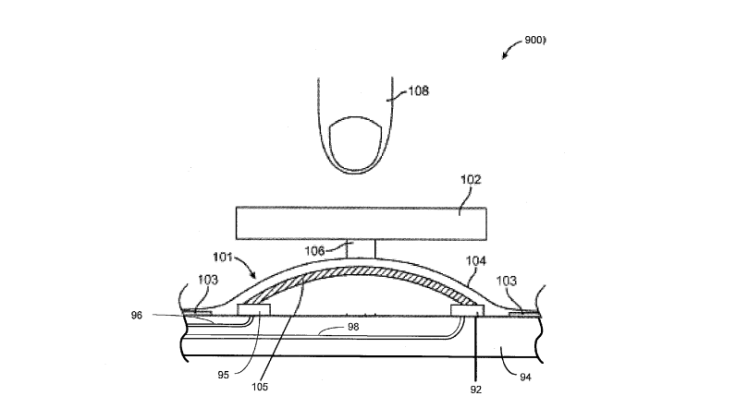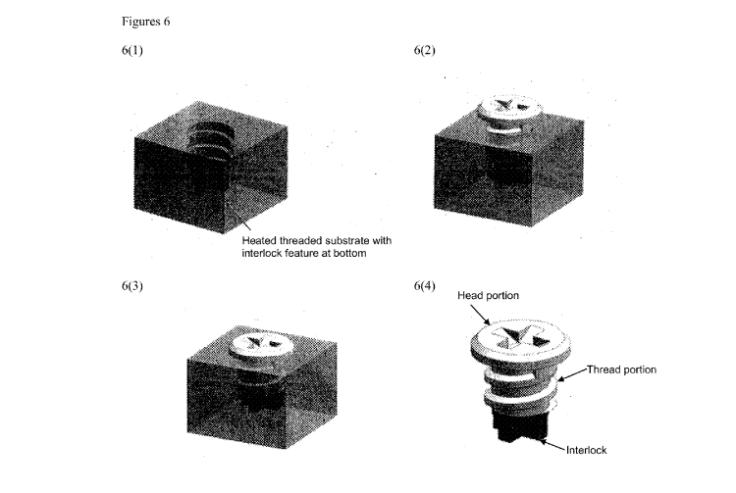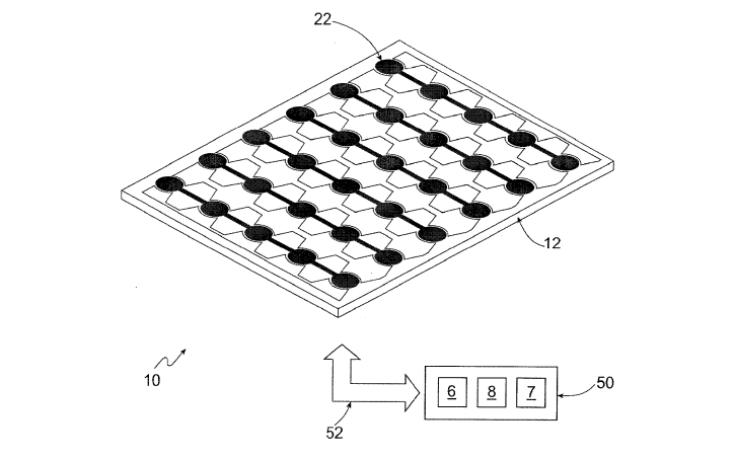Apple Files Several Liquidmetal Related Patents: Will A New Home Button Make Its Way Into iPhone 6?
Cupertino-based Apple (NASDAQ:AAPL) is reportedly exploring ways to integrate Liquidmetal amorphous alloys into its devices.
According to several patent filings by Apple on January 9, the proprietary alloys developed by Liquidmetal Technologies may potentially find their ways into the home buttons, touch sensors and tamper-resistant screws on future iOS devices such as the rumored iPhone 6.
In the flurry of patent applications filed by Apple, many of the descriptions and documentation refer to the use of a “bulk amorphous alloy,” or Liquidmetal in iOS and other Apple components. Take a look at a few of the patents filed by Apple in January below.
Bulk Amorphous Alloy Pressure Sensor

In one patent titled “Bulk Amorphous Alloy Pressure Sensor,” Apple describes the particular benefit for using amorphous alloys such as those developed by Liquidmetal:
“The bulk-solidifying amorphous alloys are capable of repeated deformation upon application of pressure, and change their electrical resistivity upon deformation, thereby enabling measurement of the change in resistivity and consequently, measuring the deformation and amount of pressure applied.”
The particular application for this patent appears to be related to the home button of iOS devices which have seen issues in the past due to its heavy usage by iOS device owners.
Apple describes the issue with traditional switches used on electronic devices in the patent:
“Because switches on consumer electronic devices are operated frequently, the materials used to fabricate the switch must be capable of repeated deformation and return to their original configuration. The ability of a material to deform reversibly under stress is known as the material's elasticity. Above a certain stress, known as the elastic limit of a material or the yield strength, the metal material may deform irreversibly, becoming inelastic, exhibiting plasticity and adversely affecting the function and utility of the switch.”
Along with a proposed solution:
“A proposed solution according to embodiments herein for pressure sensors is to use bulk-solidifying amorphous alloys as the deformable material, and to measure the pressure based on the physical changes of the bulk-solidifying amorphous alloy as it is deformed.”
Another interesting patent filed by Apple continues its trend of developing tamper-resistant fasteners on its devices.
Fastener Made of Bulk Amorphous Alloy

Apple describes its proposed fastener in its patent filing:
“A proposed solution according to embodiments herein for tamper resistance is a fastener having a head portion and a tamper resistant bulk-solidifying amorphous alloy interlock portion, wherein the fastener and the substrate into which the fastener is fitted into are permanently fastened via an interlock formed from the interlock portion during the fastening process.”
According to the patent filing, the Liquidmetal fastener could be used for different purposes such as securing “set-top boxes and other devices that use digital rights management,” along with cell phones.
Currently Apple uses a proprietary tamper-resistant screw called a “pentalobular security screw,” commonly referred to as pentalobe screws.
When it was first introduced in 2009, there was some resistance from Apple product owners that tend to be more hands-on with the innards of their devices. When the pentalobe screws found their way into devices such as the iPhone 4, websites and companies that specialize in unofficial Apple repairs joined in the outrage, but found their own ways around the proprietary screws.
While it’s uncertain if the Liquidmetal tamper-resistant screws will find a way into iOS devices, the patent filing may be a concern for those that prefer to tinker with the internal parts of Apple devices .
Bulk Touch Interface Using Patterned Bulk Amorphous Alloy

According to the patent filed by Apple, this particular implementation of a touch interface using Liquidmetal may provide improved touch-sensing capability.
“A proposed solution according to embodiment herein for improved touch sensing systems that provide resistive or capacitive sensing capabilities is to use bulk-solidifying amorphous alloys as a substrate material and to form the array on the bulk-solidifying amorphous alloy.”

In regards to where these technologies mentioned in the patents could possibly be used, Apple references several technologies such as their iPad and iPhone, but also note new applications “in other devices, such as a watch or a clock," which may lend credence to certain iWatch rumors.
According to MacRumors, Apple has been reportedly experimenting with Liquidmetal alloys since 2010. However, these new patents show the extent of Apple's research and where the amorphous alloys can potentially be used.
Do you think Liquidmetal alloy components will find their way into next-gen iOS devices and other Apple products? Let us know your thoughts in the comments.
© Copyright IBTimes 2024. All rights reserved.












